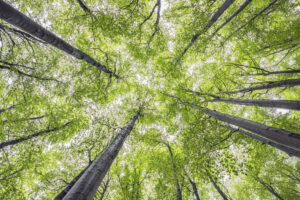Friend Or Foe?
Mushroom mycelium, also known as the vegetative part of a fungus, has a unique and beneficial relationship with trees. Mycelium is a network of thin, thread-like strands that grow and spread through soil or other organic matter. It is responsible for decomposing dead plant material and recycling nutrients back into the ecosystem. But that’s not all. Mycelium also has a symbiotic relationship with trees, meaning that both the fungus and the tree benefit from each other. This relationship is called mycorrhiza, which occurs when the mycelium connects with a tree’s roots.

Whole and sliced black truffles mushroom
What Does Mycelium Do That The Tree Doesn’t?
The mycelium provides the tree with essential nutrients, such as phosphorous and nitrogen, which are essential for healthy growth. In return, the tree provides the mycelium with sugars produced through photosynthesis. This mutual exchange of nutrients helps both the fungus and the tree thrive. Mycelium also helps trees absorb water and nutrients from the soil more efficiently. The thread-like strands of the mycelium can reach areas of the soil that tree roots cannot, allowing the tree to access a wider range of nutrients.

View of into the crown of spring beech trees
Mycelium Is The Ultimate Best Friend
mycelium can also protect trees from pests and diseases. The fungus produces antibiotics that can kill off harmful bacteria and fungi that attack the tree’s roots. Mycelium can also act as a barrier, physically blocking the spread of pests and diseases to the tree.
In addition to the benefits for individual trees, mycelium can also have a positive impact on the overall health of an ecosystem. By decomposing dead plant material and returning nutrients to the soil, mycelium helps to maintain the balance of nutrients in the ecosystem and promotes healthy plant growth.

Overall, the relationship between mushroom mycelium and trees is a symbiotic one that benefits both parties. Mycelium helps trees absorb nutrients and water, protects them from pests and diseases, and contributes to the overall health of an ecosystem.
